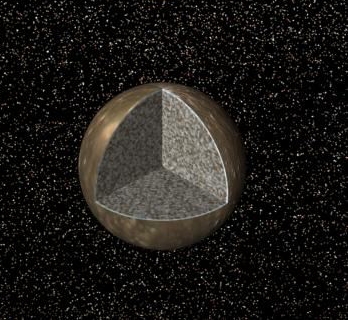This drawing shows the possible interior of Callisto.
NASA
Interior of Callisto
When the Galileo spacecraft flew by Callisto, it made measurements which showed that Callisto was made almost entirely of the same thing. This means that Callisto never separated into layers, but is probably formed of a unusual material which is made of rock and ice combined.
At the same time, there were some measurements that suggested that there might be a thin salty-slushy layer of watery-ice right under the solid surface of Callisto that creates an electric current. This watery-ice layer is thought to be on Ganymede and Europa as well. This is a picture that shows the interiors of Io, Europa, Ganymede and Callisto together.
You might also be interested in:
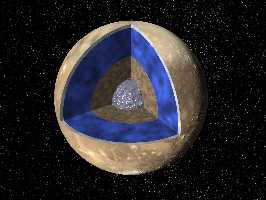
The diagram to the left shows a cutaway of the possible inside structure of Ganymede, based on recent measurements by the Galileo spacecraft. It shows a small core of metal, overlain with some rocky material,
...more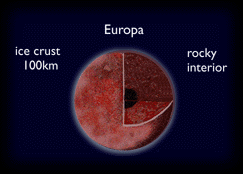
The diagram to the left shows a cutaway of the possible interior structure of Europa. The composition of the icy moons is mostly ice, therefore there is probably a small core of some rocky material buried
...more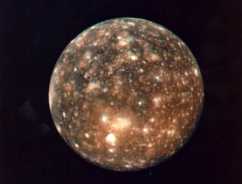
Callisto was first discovered by Galileo in 1610, making it one of the Galilean Satellites. Of the 60 moons it is the 8th closest to Jupiter, with a standoff distance of 1,070,000 km. It is the 2nd largest
...more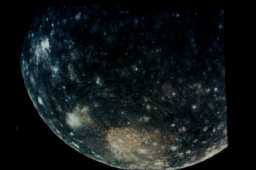
The insides of most of the moons and planets separated while they were forming out of the primitive solar nebula. Measurements by the Galileo spacecraft have been shown that Callisto is the same inside
...more
The Galileo spacecraft was launched on October 19, 1989. Galileo had two parts: an orbiter and a descent probe that parachuted into Jupiter's atmosphere. Galileo's main mission was to explore Jupiter and
...more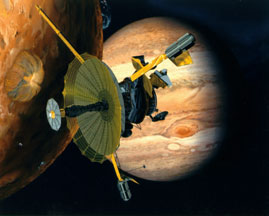
The Galileo spacecraft has finally reached the end of its road. Galileo has been orbiting Jupiter since 1995. On September 21, 2003, Galileo will dive into Jupiter's atmosphere and burn up. This crash
...more
Amalthea was discovered by E Barnard in 1872. Of the 17 moons it is the 3rd closest to Jupiter, with a standoff distance of 181,300 km. Amalthea is about the size of a county or small state, and is just
...more
